Short-Term Gain, Long-Term Strain: The Reality of Counter Offer Acceptance

The second half of 2023 has seen a sustained increase in counter offers, as companies compete to recruit in a tightened labour market and strive to hold on to their current talent. Job seekers entering the market are more aware of their value, and of the current shortage of talent available.
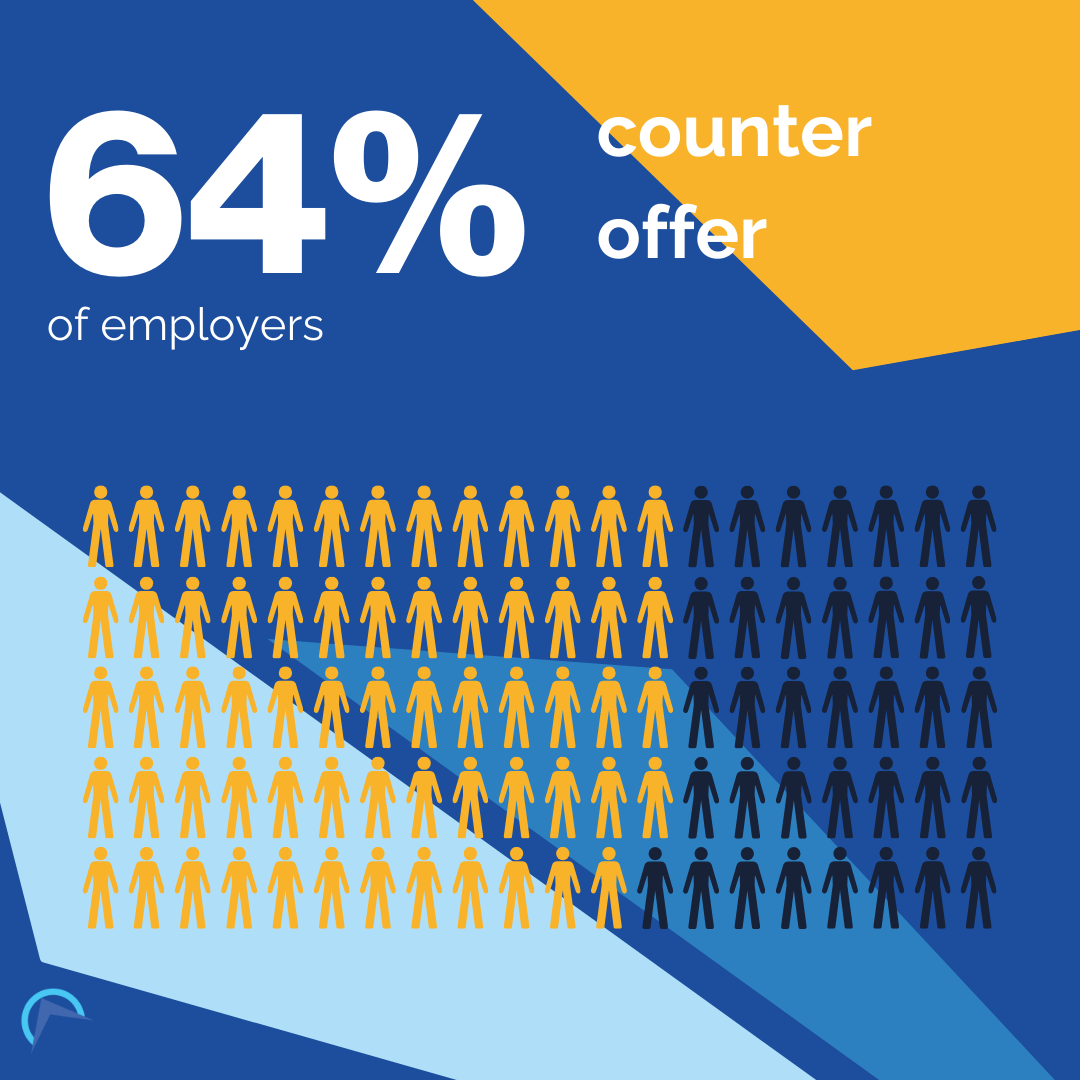 This gives them more “buying power” and companies who want to hire the best talent will be offering a robust, communicative, and short recruitment process that makes potential hires feel respected. The hiring company will also have an effective onboarding programme as part of this, that begins at the offer of the new role and engages with their new employee all the way up to their first day.
This gives them more “buying power” and companies who want to hire the best talent will be offering a robust, communicative, and short recruitment process that makes potential hires feel respected. The hiring company will also have an effective onboarding programme as part of this, that begins at the offer of the new role and engages with their new employee all the way up to their first day.
Recruitment dynamics have shifted and many people put forward for new roles are passive, having been headhunted, rather than directly applying for a job. This puts the onus on recruiters and hiring managers to promote the opportunity to the applicant. It also makes them more susceptible to counter offers, as they weren't actively seeking a change.
But accepting a counter offer can cause more difficulty than it solves in the short term. To start with, 80% of employees who accept counter offers continue their job search and end up leaving within 6 months anyway. This is because it isn’t usually about the money – most often it’s the culture and work environment that caused someone to want to leave their role.
Financial Factors
 Employees often succumb to counter-offers with an attractive pay rise (especially in the current market where recruiters are seeing counter offers of £10,000 or more quite regularly). However, accepting a significant salary increase poses risks, such as being paid far more than market rate and therefore being unable to leave without taking a pay cut. As 90% of people who accept a counter offer still leave within 6 to 12 months, this can be a gamble.
Employees often succumb to counter-offers with an attractive pay rise (especially in the current market where recruiters are seeing counter offers of £10,000 or more quite regularly). However, accepting a significant salary increase poses risks, such as being paid far more than market rate and therefore being unable to leave without taking a pay cut. As 90% of people who accept a counter offer still leave within 6 to 12 months, this can be a gamble.
Last in, first out
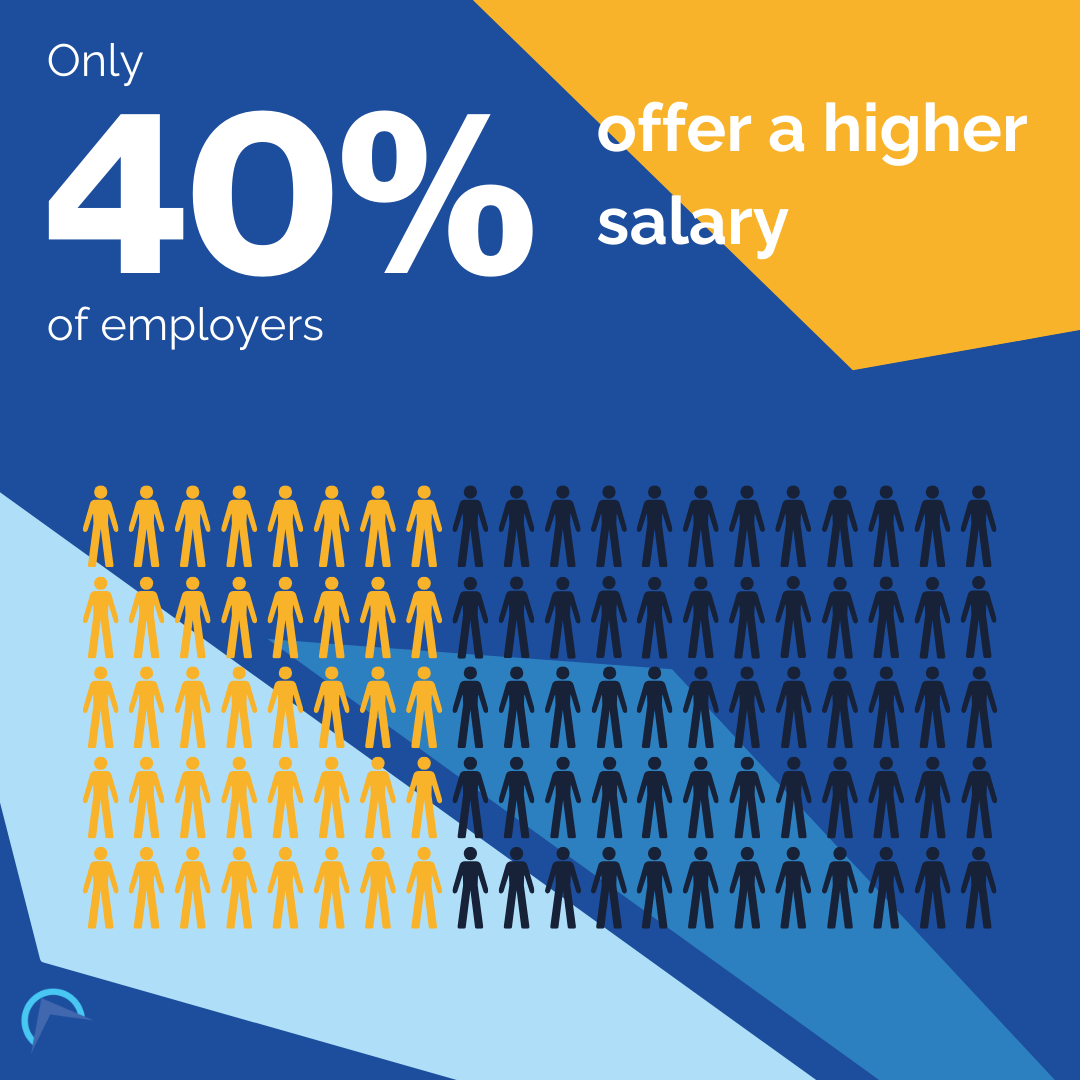 The market feels very uncertain at the moment, and for many, staying put is the easier choice, offering stability and security. The new job is an unknown, and this can be daunting. However, this can backfire down the line as an employer may lose trust in someone who has been willing to leave and the relationship may strain. People cite a manager’s trust as one of the key reasons they have for enjoying their job and without this, are more likely to leave.
The market feels very uncertain at the moment, and for many, staying put is the easier choice, offering stability and security. The new job is an unknown, and this can be daunting. However, this can backfire down the line as an employer may lose trust in someone who has been willing to leave and the relationship may strain. People cite a manager’s trust as one of the key reasons they have for enjoying their job and without this, are more likely to leave.
Worse than that, an employee who accepts a counter offer with a large salary increase may find themselves vulnerable if the company wishes to cut costs and downsize. They may have a false sense of security in their current role.
Career Stagnation
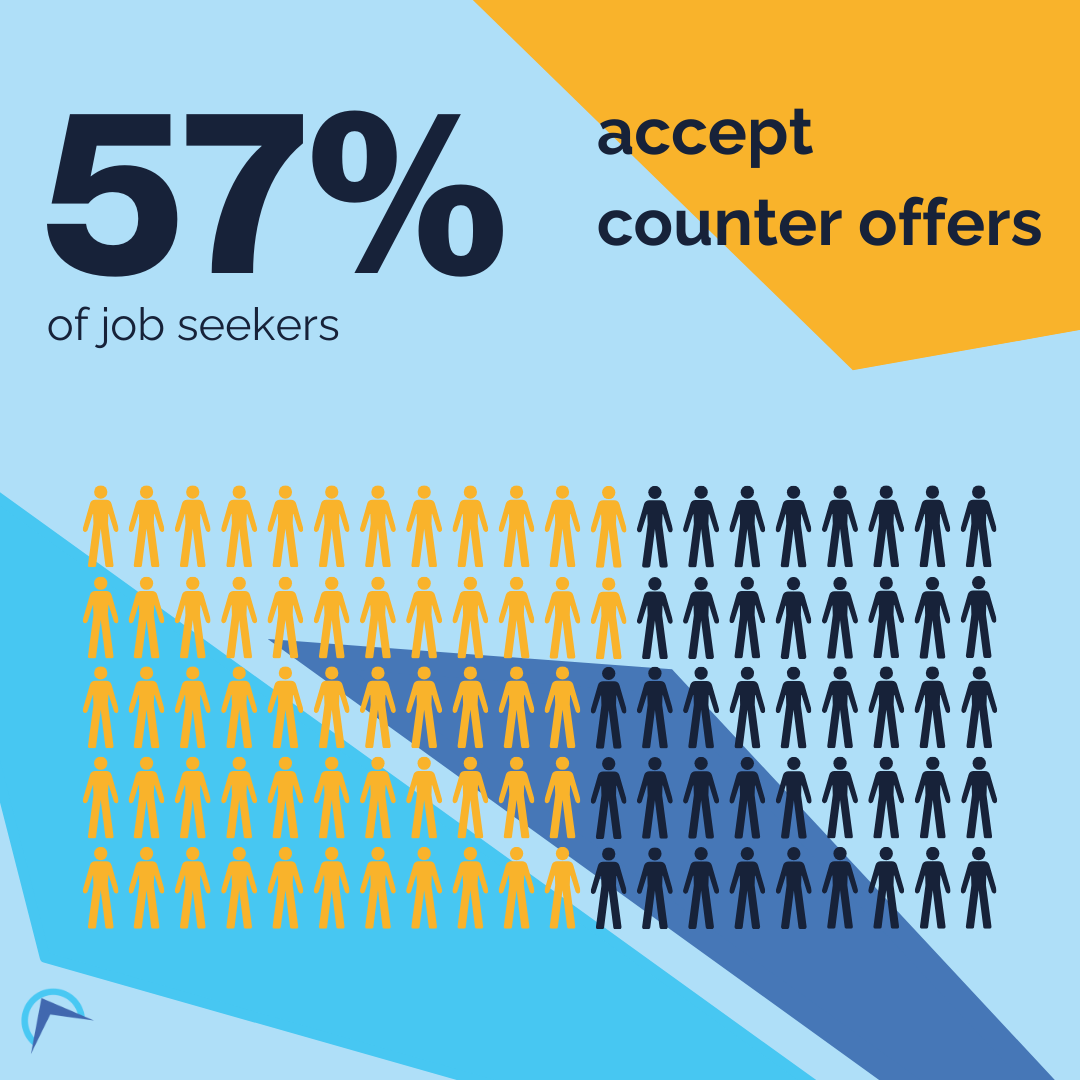 Understanding why someone wants to leave their current role is crucial. If they are simply dissatisfied by the way things are at work in a way that their employer can easily fix, that makes them very susceptible to a counter offer. Lack of progression, salary lower than market rate, flexibility and certain responsibilities are all things that could be remedied by a current employer.
Understanding why someone wants to leave their current role is crucial. If they are simply dissatisfied by the way things are at work in a way that their employer can easily fix, that makes them very susceptible to a counter offer. Lack of progression, salary lower than market rate, flexibility and certain responsibilities are all things that could be remedied by a current employer.
Work-Life Balance
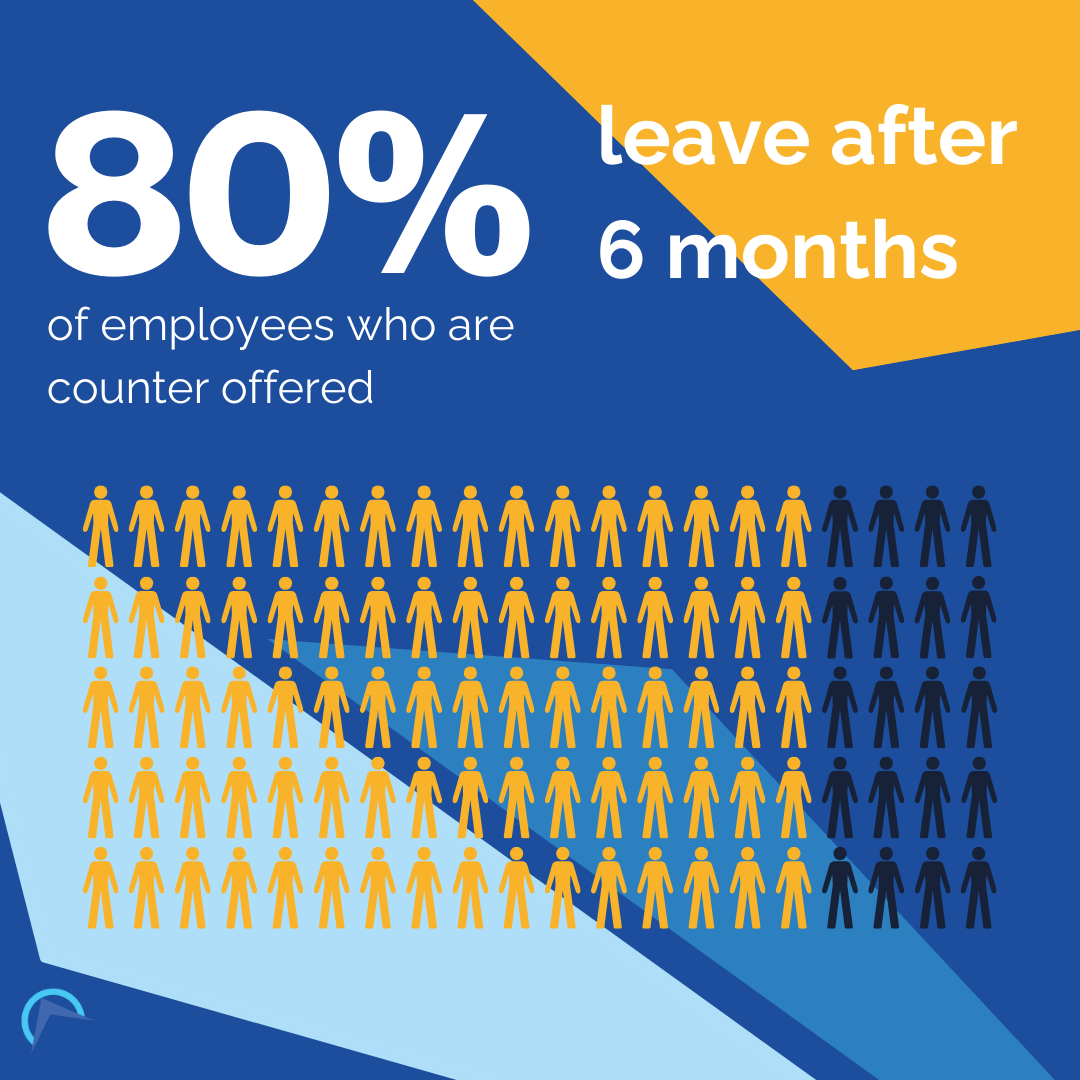 Concerns about a new role's lack of flexibility and the energy needed to learn the ropes and integrate into a team may encourage job seekers to accept counter offers based on maintaining their current work-life balance.
Concerns about a new role's lack of flexibility and the energy needed to learn the ropes and integrate into a team may encourage job seekers to accept counter offers based on maintaining their current work-life balance.
Post-pandemic, employers are also putting more flexibility on the table as part of counter-offer strategy, promising more support for family commitments, health and wellbeing and other benefits.
Time To Recruit
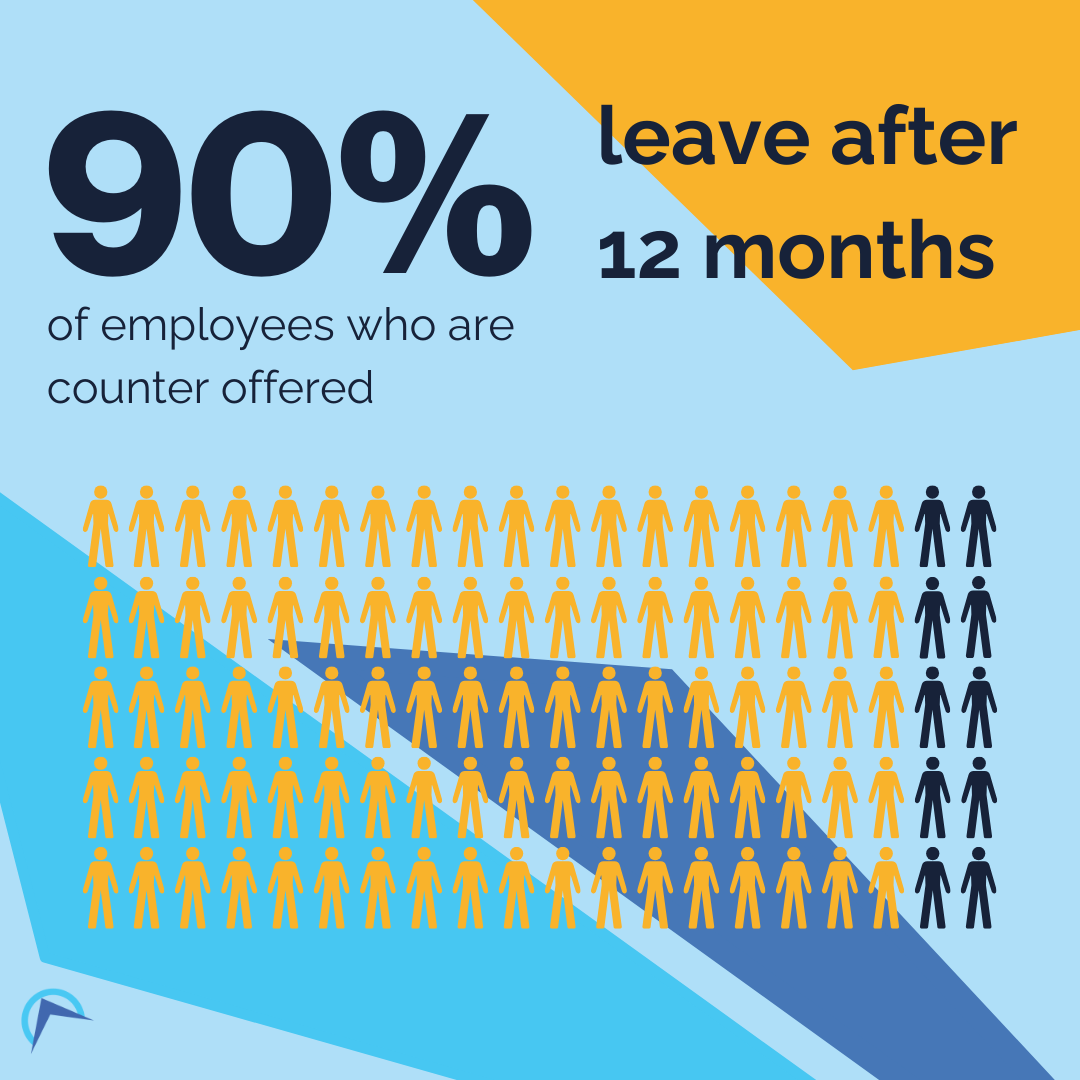 Extended recruitment processes, coupled with three-month notice periods, provide ample time for employers to present counter offers and new hires to reconsider their decisions.
Extended recruitment processes, coupled with three-month notice periods, provide ample time for employers to present counter offers and new hires to reconsider their decisions.
Communication between the company and their new employee is essential in this period to make people feel valued and integrated. Their current employer will certainly be having discussions with them about staying, and 1 to 3 months is a long time for someone to stick to a decision without assurance.
Testing the Waters
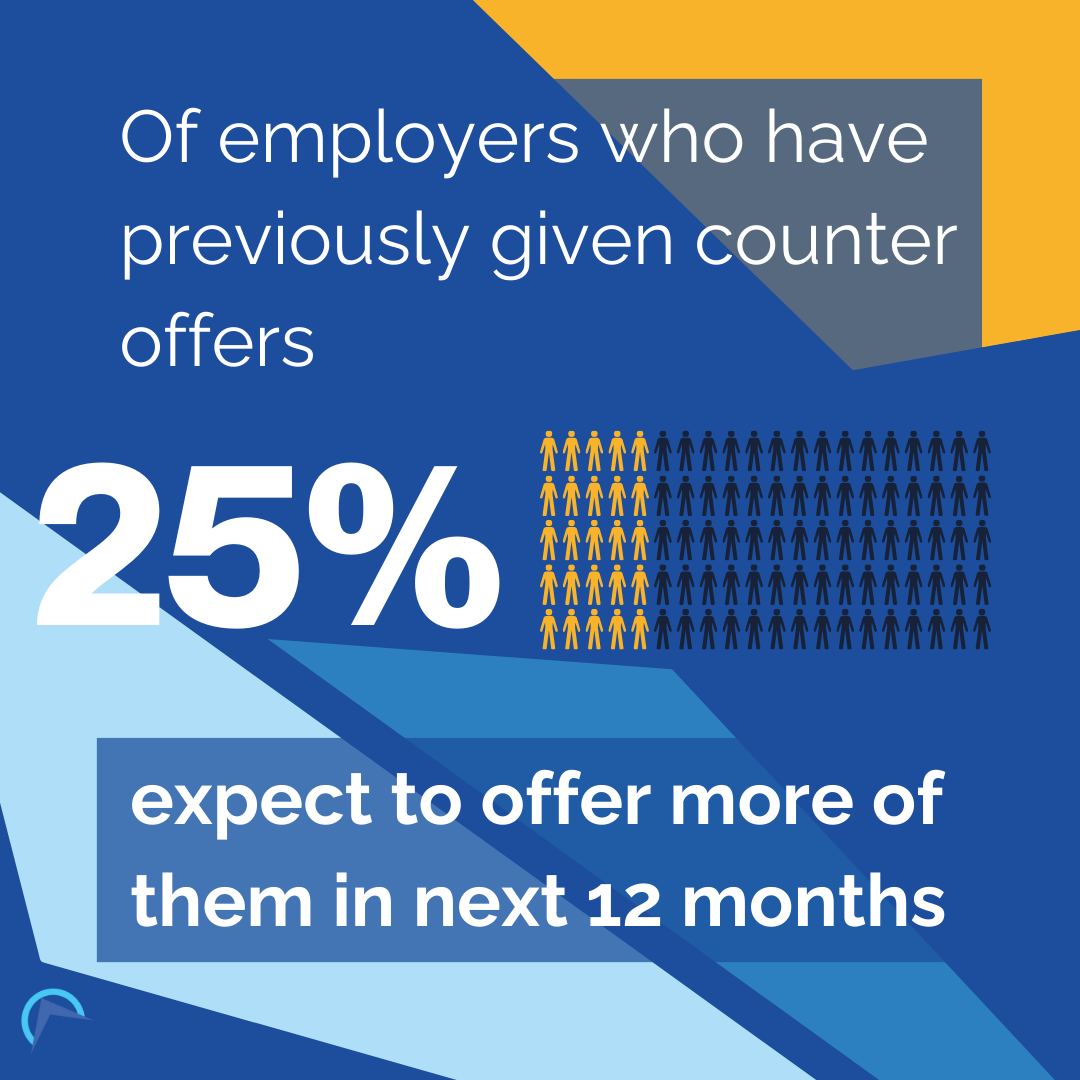 Some candidates may simply be angling for a pay raise in their current role and hoping for a counter-offer that will give them leverage by applying to other roles. This can be a difficult situation to navigate for hiring teams, however it can be tackled by clearly understanding a person's reasons for leaving.
Some candidates may simply be angling for a pay raise in their current role and hoping for a counter-offer that will give them leverage by applying to other roles. This can be a difficult situation to navigate for hiring teams, however it can be tackled by clearly understanding a person's reasons for leaving.
Counter offers feel like a really good option for employees who are dissatisfied with their current position, and they can make people feel more respected and therefore loyal to the company. But for most people, this feeling lasts a short time, and the reasons they originally wanted to leave reassert themselves. Job seekers need to consider their long term wants and needs, and whether their current role and organisation is fulfilling those. They also need to maintain good, transparent communication throughout the hiring process to get the best experience possible.








